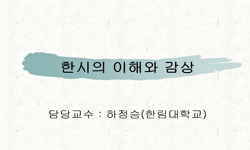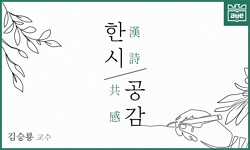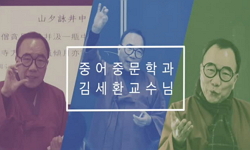豹菴 姜世晃의 저작 『표암유고』가 필사본으로 현전하고 있지만, 이곳에 수록되지 못한 시와 산문들이 많다. 본 연구는 이러한 표암의 자료적 성격을 고려하여, 후손 강구수가 수집한 표암...
http://chineseinput.net/에서 pinyin(병음)방식으로 중국어를 변환할 수 있습니다.
변환된 중국어를 복사하여 사용하시면 됩니다.
- 中文 을 입력하시려면 zhongwen을 입력하시고 space를누르시면됩니다.
- 北京 을 입력하시려면 beijing을 입력하시고 space를 누르시면 됩니다.

표암 강세황 가(家) 관련 필첩(筆帖) 자료 탈초·번역 및 해제(1) - 『가서첩(家書帖)』을 중심으로 = The bibliographical introduction, translation, and changing the 草書(the very cursive style of writing Chinese characters) into 正字(the correct form of a character) of Pyoam Kang Sehwang’s Hand writing book(1) - focus on the Gaseocheob
한글로보기https://www.riss.kr/link?id=A107783131
- 저자
- 발행기관
- 학술지명
- 권호사항
-
발행연도
2021
-
작성언어
-
-
주제어
『가서첩』 ; 표암 강세황 ; 강구수 ; 대산 강진 ; 수서 ; 간찰 ; 한시 ; Gaseocheob ; Pyoam Kang sehwang ; Kang Gusoo ; Daesan Kang Jin ; Suseo ; congratulations on longevity
-
등재정보
KCI등재
-
자료형태
학술저널
-
수록면
219-272(54쪽)
- DOI식별코드
- 제공처
-
0
상세조회 -
0
다운로드
부가정보
국문 초록 (Abstract)
豹菴 姜世晃의 저작 『표암유고』가 필사본으로 현전하고 있지만, 이곳에 수록되지 못한 시와 산문들이 많다. 본 연구는 이러한 표암의 자료적 성격을 고려하여, 후손 강구수가 수집한 표암 관련 필첩 『家書帖』을 탈초·번역하고 해제하는 것을 목적으로 하였다. 『가서첩』은 표암의 高孫 강구수가 만든 것으로, 그는 발문에서 표암의 유묵들이 사라지는 것이 안타깝다고 밝히고는 총 14편의 시문을 수록하였다. 그러나 실제 필첩을 살펴본 결과 『가서첩』의 앞부분에 배치된 7편만 강세황의 작품이고 나머지는 7편은 강구수의 부친 對山 姜溍의 작품이었다. 하지만 분량 면에 있어서는 강세황이 작품이 강진의 작품보다 훨씬 많았다.
『가서첩』의 내용을 분석해보면 강세황의 작품은 수서 1편과 간찰 6편이고, 강진의 작품은 간찰 2편, 간찰과 한시 혼합 1편, 한시 4편이었다. 이에 3장에서 강세황과 강진의 작품으로 나누고, 강세황 작품은 다시 수서와 간찰로, 강진의 작품은 한시와 간찰로 나누어 해제를 작성하였다.
강세황의 수서는 1754년 장모의 회갑을 맞이해서 쓴 것으로, 청장년기 강세황의 문학 인식 및 글쓰기 양상, 문학과 회화 양식간의 상호 연관성을 탐색해볼 수 있는 자료였다. 이 외 그의 간찰에는 집안의 負債로 고민하는 모습, 자식을 위해 장을 만들어 보내고자 하는 모습, 자식들의 병마를 염려하며 직접 약을 조제하는 모습, 지인의 부탁으로 장악원 악공을 위해 자리를 주선하는 모습, 벼슬살이로 바쁜 모습 등 생활인 강세황의 모습이 잘 부각되어 있었다.
강진의 한시 자료는 1842년과 1843년 풍양 조씨 인물들과 떠난 금강산 여행 관련 기록과 검서관으로 재직하면서 지은 시로 구분된다. 금강산 여행 관련 한시는 『대산집』에도 수록되어 있고, 검서관으로 재직하면서 지은 5수는 『대산집』에 누락되어 있다. 이 한시에는 강진과 趙萬永·趙寅永·趙秉鉉과의 世交와 知遇, 검서관의 업무와 관련한 강진의 모습은 물론, 청아하면서도 감각적으로 써내려간 강진의 시적 면모가 잘 드러난다. 간찰의 경우는 강진의 중요 산문 작품이다. 검서관으로 출사하기 이전의 일상적 모습과 금강산 여행을 떠날 때의 설렘 등이 표현되고 있어, 한시로만 엮은 『대산집』을 보완해주는 기능을 하고 있다.
다국어 초록 (Multilingual Abstract)
Currently, Pyoam Yugo, the author of Kang Sehwang(1713-1791), is transcribed as a manuscript, but there are many poems and prose that are not included here. In consideration of the material characteristics of this Pyoam, the purpose of this study is t...
Currently, Pyoam Yugo, the author of Kang Sehwang(1713-1791), is transcribed as a manuscript, but there are many poems and prose that are not included here. In consideration of the material characteristics of this Pyoam, the purpose of this study is to change the 草書(the very cursive style of writing Chinese characters) into (the correct form of a character), 正字translate, and give a bibliographical explanation of the pyoam-related album, which was collected by descendant Kang Gusoo.
The Gaseocheob was made by Pyoam’s grandson, Kang Gusoo, and he collected a total of 14 poems and prose after saying in the postscript that it was regrettable that the relics of Pyoam were disappeared. However, according to the actual handwriting, only seven of them were produced by Kang Sehwang, and the other seven were by Kang Gusoo’s father, Daeshan Kang Jin. In terms of volume, however, Kang Sehwang had far more works than Kang Jin’s. According to the analysis of the contents of Gaseocheob, Kang Sehwang’s works were 1 Suseo(congratulations on longevity) and 6 Letters, while Gang Jin’s works were 2 letters, 1 poem mixed with letter, and 4 poems. In Chapter 3, Kang Sehwang and Kang Jin’s works were divided into Suseo and letters, and Kang Jin’s works were divided into Chinese poems and letters.
Kang Sehwang’s Suseo was written in 1754 for his mother-in-law’s 60th birthday. It was a material to explore the interrelationship between literature and writing patterns, literature and painting styles of Kang Sehwang in the early youth.
The letter depicts Kang Sehwang, who was worried about his family’s debt, wanted to make soy sauce for his children, prepared his own medicine for his children’s illness, arranged a seat for a master of music at the request of an acquaintance, and was busy with government posts.
The materials of Kang Jin’s poems are divided into records related to the travel with the Pungyang Cho family in 1842 and 1843, and poems written while serving as a book inspector.
Poems related to tours to Kumgangsan are also included in Daesanjib, and five poems written while serving as a book inspector are omitted from Daesanjib.
In this poem, the exchanges and special relationships with Kang Jin, Cho Man-young, Jo Inyoung, and Cho Byunghyun, the image of Kang Jin as a book inspector, and the poetic aspect of Kang Jin, which is described as clean and sensuous, are well revealed.
The letter is an important prose work of Kang Jin. The daily appearance of his career as a book inspector and the excitement of going on a trip to Kumgangsan are expressed, complementing the Daesanjib which is composed only of Chinese poems.
동일학술지(권/호) 다른 논문
-
나말여초 시인의 세계 체험과 서정시 -나말여초 한문학의 재조명을 위하여
- 우리한문학회
- 김보경 ( Kim Bo-kyeong )
- 2021
- KCI등재
-
한국 초기한문학에서의 전기(傳奇) - 「최치원(崔致遠)」의 경우
- 우리한문학회
- 정환국 ( Jung Hwan-kuk )
- 2021
- KCI등재
-
- 우리한문학회
- 鄭墡謨 ( Jung Sun-mo )
- 2021
- KCI등재
-
14세기 후반 목은그룹의 형성과 둔촌(遁村) 이집(李集)의 문학 활동
- 우리한문학회
- 하정승 ( Ha Jung-seung )
- 2021
- KCI등재





 KCI
KCI KISS
KISS






